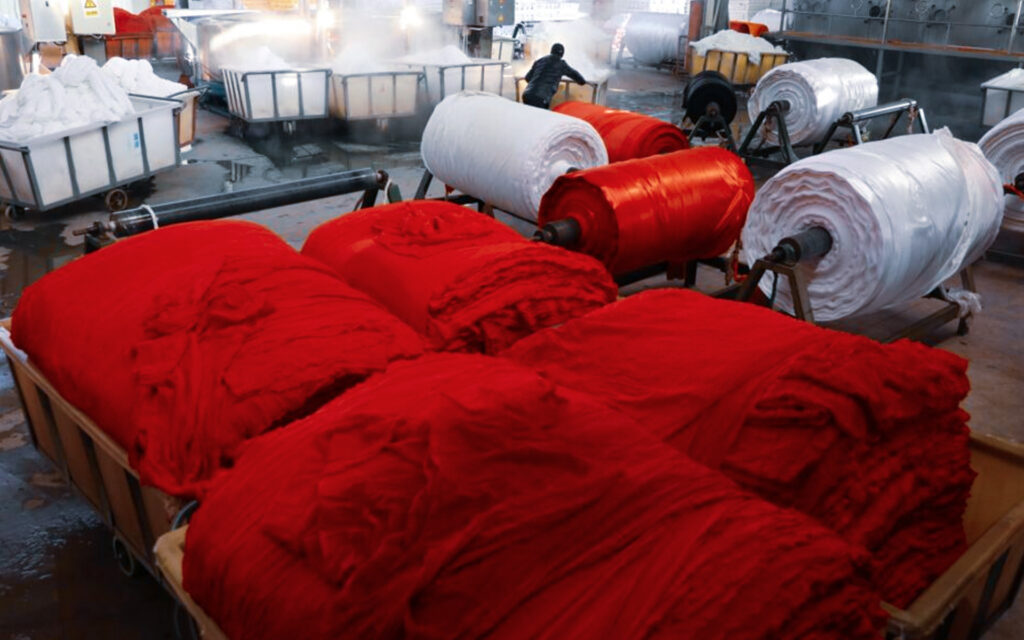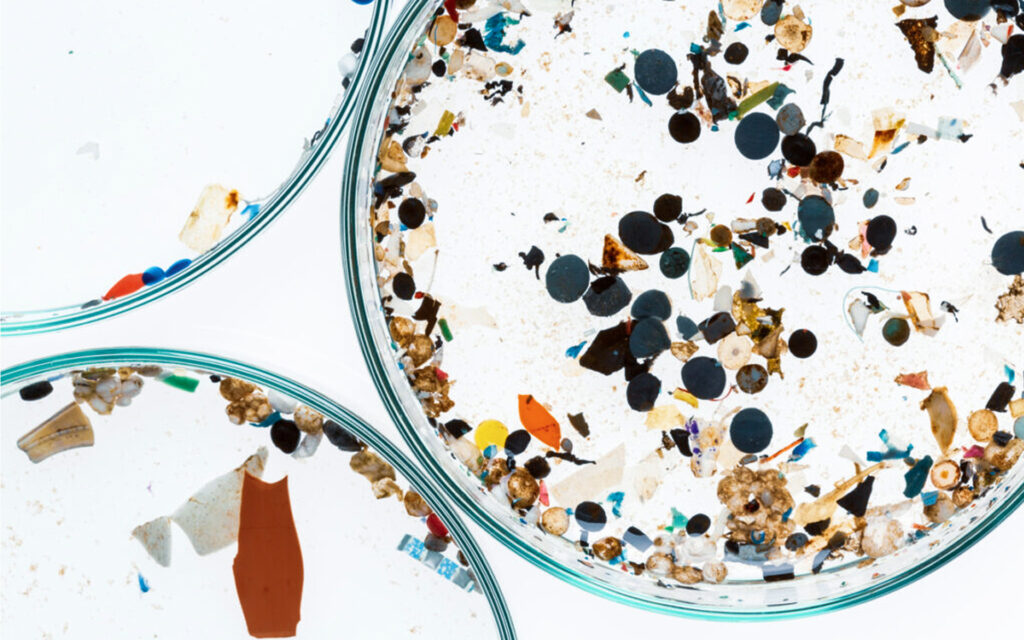The fashion industry is one of the most polluting industries in the world. According to the World Economic Forum, fashion production makes up 10% of humanity’s carbon emissions, dries up water sources, and pollutes rivers and streams. 85% of all textiles go to the dump each year. Along with finishing, dyeing is the most polluting and energy-intensive process in making clothes. In Cambodia, for example, the fashion industry is responsible for 88% of all industrial manufacturing as of 2008, which has caused an estimated 60% of water pollution and 34% of chemical pollution. The fashion industry is also one of the major contributors to plastic microfibers entering our oceans.
In 2018, the Ministry of Environment and Food of Denmark conducted research and found that an organic cotton tote requires 20,000 uses to offset its production impact. Tote bags can contribute to pollution despite being perceived as an eco-friendly alternative to plastic bags.

The most energy-intensive and environmentally damaging process in clothing manufacturing is the dyeing process in conjunction with finishing. Finishing involves applying chemicals or treatments to achieve the desired texture or appearance of the fabric. The industry’s methods and materials have a significant environmental impact as they use fossil fuels, generating carbon dioxide and contributing to global warming. Many dyeing and finishing processes also rely on toxic chemicals, posing health hazards to workers and polluting rivers and groundwater systems.

What are some eco-friendly alternatives to fast fashion?
Eco-friendly alternatives to fast fashion include:
- Second-hand clothing: Buying second-hand clothing is a great way to reduce the environmental impact of fashion. It helps to reduce the amount of clothing that ends up in landfills and reduces the demand for new clothing.
- Sustainable materials: Clothing made from sustainable materials such as organic cotton, hemp, bamboo, and recycled polyester can help reduce the environmental impact of fashion.
- Renting: Renting clothes is another way to reduce the environmental impact of fashion. It allows you to wear clothes for special occasions without having to buy them.
- Upcycling: Upcycling is the process of transforming old or discarded materials into something new and useful. It’s a great way to give old clothes a new life.

What are some sustainable brands?
- Patagonia: Patagonia is a clothing company that is committed to sustainability. They use organic cotton and recycled polyester in their clothing and have a program that allows customers to return their used Patagonia clothing for recycling.
- Reformation: Reformation is a sustainable clothing brand that uses eco-friendly materials such as Tencel and recycled fabrics. They also have a program that allows customers to return their used Reformation clothing for store credit.
- Everlane: Everlane is a clothing company committed to transparency and sustainability. They use eco-friendly materials such as organic cotton and recycled polyester in their clothing and are transparent about their production process.
- Allbirds: Allbirds is a shoe company that uses sustainable materials such as wool and eucalyptus in their shoes. They also have a program that allows customers to return their used Allbirds shoes for recycling.

What are some daily polluting items in the fashion industry?
- Cotton farming: Cotton requires large amounts of water for irrigation and treatment, depleting local freshwater and groundwater resources. To increase the production required to fulfill this high demand, pesticides, and fertilizers are often used to increase cotton output.
- Synthetic fabric production: Synthetic fabrics such as polyester are made from petroleum, a non-renewable resource. The production of synthetic fabrics also requires large amounts of energy and releases greenhouse gases.
- Contaminated wastewater: The fashion industry is responsible for polluting water sources with contaminated wastewater.
- Microfibre pollution: Microfibres from synthetic fabrics are released during washing and end up in water sources.

Nowadays we really don’t have an excuse to perpetrate old and polluting habits when it comes to our fashion choices. Fortunately, there is enough information to help everyone conduct greener choices. Also, many protagonists of the fashion industry are more committed than ever before to work towards healthy standards to support consumer behaviours where sustainability is a principle necessary and to be respected.





